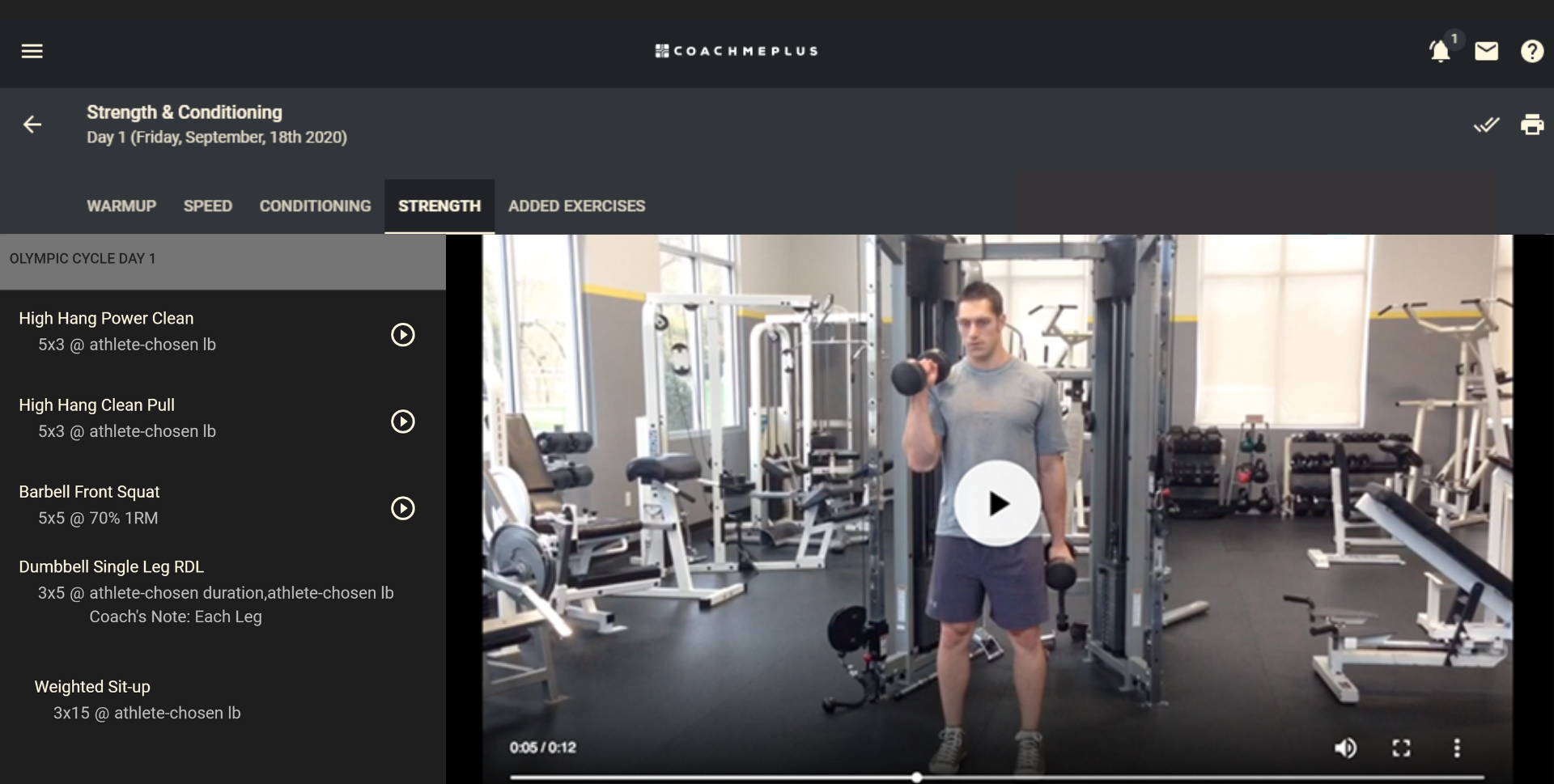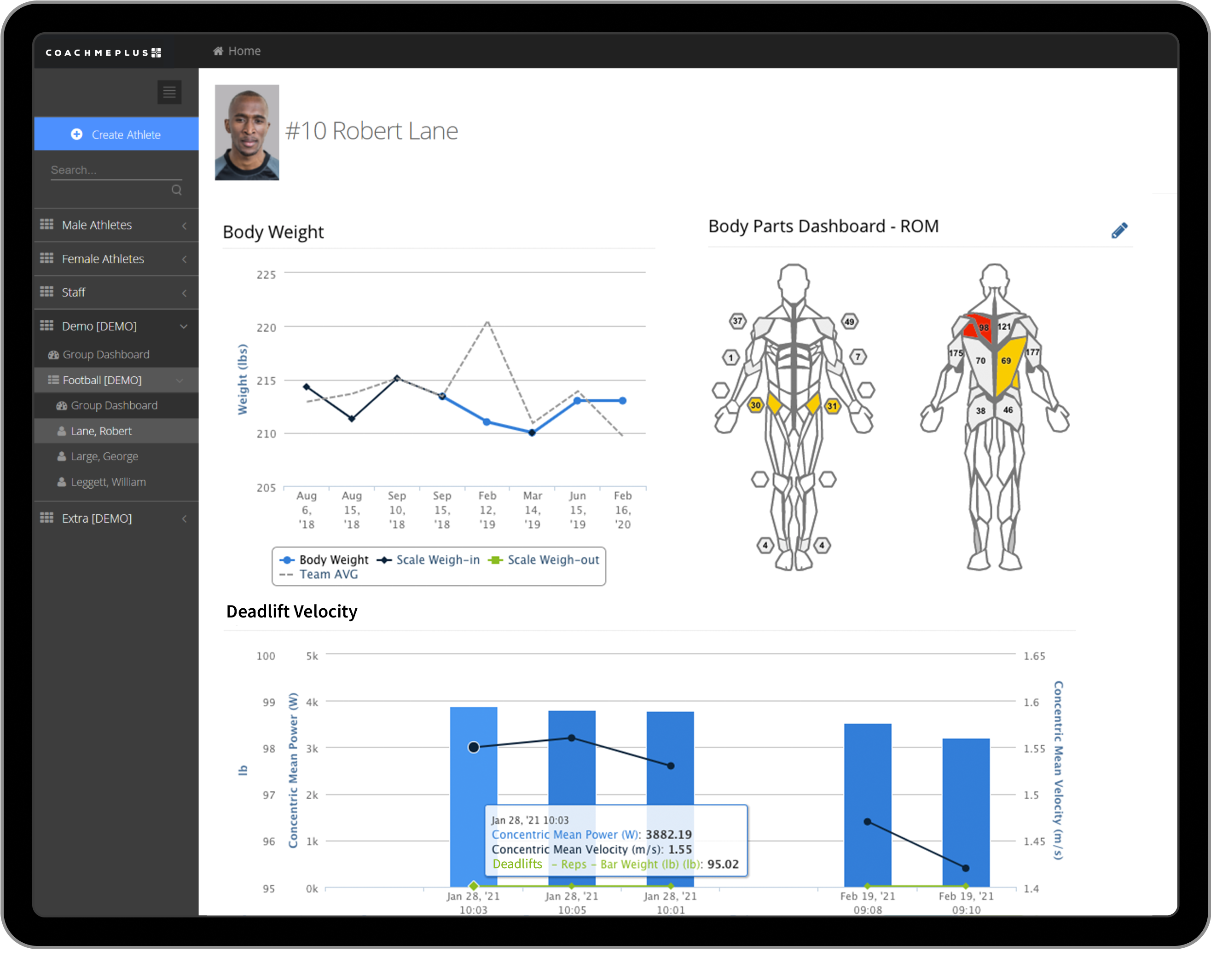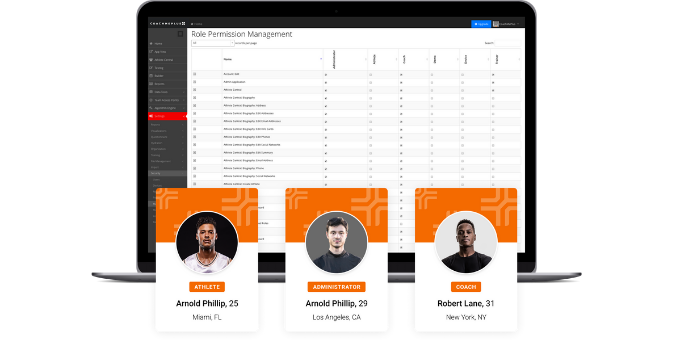
Strength and conditioning professionals, especially in collegiate settings, are the most involved with athletes next to sport coaches. Therefore, there is a paramount need for standards in the profession to maintain the safety of the athletes and internal support of strength and conditioning coaches. In addition to the responsibilities of the coach, the non-training information that is part of the profession is an area that needs more attention and greater development. This Academy Guide includes a full outline of professional requirements that serve as an important starting point. It’s expected that the department and other professionals outside of direct staff be privy to the standards of the profession to safeguard athlete risk and the professional challenges of the coaching staff.
Responsibilities and Scope of Practice
The role of the strength and conditioning coach is expanding, but the scope of practice must eventually be outlined in order to properly serve the athletes and the employer. In private facilities, it’s often the athlete, parent, or agent who hires the strength and conditioning professional, so a working definition of the strength and conditioning role is necessary.
While a coach may be educated on sports nutrition, sports medicine, sport psychology, and even the sport itself, a strength and conditioning should know their boundaries professionally.
In addition to their athlete development duties, a private sector or team strength coach will have other responsibilities outside of training. It’s expected that the role of a strength and conditioning coach will be more than just training athletes and they will have professional duties like other fields. Therefore, a strength and conditioning coach should be aware that additional administration duties are expected, but only those that support the training and preparation of athletes. It is highly recommended that coaches combine what is professionally expected by the governing body that certified or licensed them with their scope of practice and know their expectations and boundaries.

Accreditation and Certification
Practical hands-on experience is expected by all coaches, but certification adds a necessary level of confidence. Insurance that the professional has been educated on what they are able to do with athletes, how to design training, and how to instruct athletes is clearly beneficial. In addition to academic education and professional certification, a modern strength and conditioning coach should only apply the services or training they are educated to do. While it may not be necessary to have a license or certification to apply training techniques, it’s better to receive some form of accreditation. An attempt to appraise the competence in the body of knowledge within strength and conditioning is a welcome start.
Outside of performance training, the strength and conditioning professional should have annual training on emergency response techniques. While certifications such as the Certified Strength and Conditioning Specialist (C.S.C.S) require emergency response training, not all certifications in performance require it. Regardless of the background and certification attained, the protection of athletes through internal and external safety education and training must be planned and administered annually.
Documentation and Record Keeping
No matter how organized and experienced a staff is, accidents and complicated matters will happen that require an internal review or possibly an external analysis. Thus, record-keeping can reduce much of the burden and time if the staff consistently documents day-to-day operations. Auditing daily use can be done easily with logging and shared online systems, and coaches who don’t have budgets can leverage cloud programs that are low-cost or free.
Athlete management systems (AMS) and electronic medical records (EMR) fit naturally and can help solve situations that demand communication and documentation. Athlete Dashboards are a quick and efficient tool for monitoring microdata on a macro scale. A modern strength and conditioning program should have a combination of the following:
1. A detailed breakdown of all training sessions planned and administered in real time.
2. Comprehensive medical information that is protected and accurately maintained.
3. General biographical information, such as point of contact for emergency events.
4. Athlete monitoring data that oversees wellness and recovery from training and competition.
In addition to software that provides athlete data, it’s vital that coaches have a written emergency action plan (EAP). All athletes should know how to access staff in case of an emergency, and at times a rehearsal or drill is necessary to test the effectiveness of the written procedure. Finally, a complete set of forms for common events that occur, such as accident and incident reports, should be available for staff to fill out when needed.
Legal documents and insurance are specific to sports performance and only cover typical risks found in sports training. Negligence, such as actions that are inappropriate and susceptible to lawsuits, is not covered by insurance. Private facilities should have liability coverage for inside and outside the building, as well as personal insurance whenever possible. Medical screening forms and/or waivers are part of both private and team facilities, and should be updated periodically to meet the current standards.

Budgeting and Sustainability
Scholastic and professional levels do share a common theme of servicing equipment and technology year to year, and a necessary working budget is required to keep the weight room equally maintained. Replacement plans, annual licenses, educational allowances, and even renovations are part of sustaining the function of a modern strength and conditioning department.
When managing a budget, compromises are expected in order to meet the constraints of a fixed resource. Long-term planning, such as equipment replacement and servicing, as well as growth of the program require experience and education. In addition to organizing a budget, other unexpected costs should be allocated for, as the future is bound to change. Setting aside money for new technology and even staffing may be necessary at elite levels, and scholastic coaches should advocate for more resources as the responsibilities grow. For example, a high school strength and conditioning coach may have a low coach-to-athlete ratio that is unsafe; thus, communication with the athletic department is recommended. Athletes who are not training in a safe and effective manner due to poor equipment and lack of supervision are a problem that must be managed with documented communication and solved immediately.
Staff Considerations
Hiring and terminating staff is an essential skill set for coaches who manage departments or are involved in strength and conditioning privately. The hiring process is a complex event of attracting candidates who are both qualified and willing to dedicate themselves to the philosophical and cultural beliefs of the current department. The job turnover of strength and conditioning professionals is typically high, due to the changes in team coaches and the staff that supports the athlete. In the private sector, turnover is similar, but some facilities cater to coaches who want stability and life quality for their family.
Internal conflicts or problems with outside departments are expected, but can be mitigated with communication and shared data. Conflict often occurs when communication breaks down and information is unavailable; therefore, policies and procedures that are known to help discourage toxic work environments and poor collaboration should be used. Conflicts can usually be resolved with a chain of command and adequate time to document problems and issues specific to the role of a strength and conditioning coach. Many AMS’ give role permissions across the team and staff allowing senior coaches control over everything. If a resolution can’t occur among the parties involved, seeking help by working with superiors is usually warranted and effective.
Termination of duties is a difficult but necessary part of the staffing process. Due to the possible legal ramifications, a structured plan of severance that is fair and common within the industry is recommended. Performance reviews and job expectations should be given at regular time intervals to ensure that communication is clear and managed. Unexpected termination or retirement due to personal needs is often the case with medical problems and life challenges outside of work, and each case should be handled individually.

Staff Considerations
Hiring and terminating staff is an essential skill set for coaches who manage departments or are involved in strength and conditioning privately. The hiring process is a complex event of attracting candidates who are both qualified and willing to dedicate themselves to the philosophical and cultural beliefs of the current department. The job turnover of strength and conditioning professionals is typically high, due to the changes in team coaches and the staff that supports the athlete. In the private sector, turnover is similar, but some facilities cater to coaches who want stability and life quality for their family.
Internal conflicts or problems with outside departments are expected, but can be mitigated with communication and shared data. Conflict often occurs when communication breaks down and information is unavailable; therefore, policies and procedures that are known to help discourage toxic work environments and poor collaboration should be used. Conflicts can usually be resolved with a chain of command and adequate time to document problems and issues specific to the role of a strength and conditioning coach. Many AMS’ give role permissions across the team and staff allowing senior coaches control over everything. If a resolution can’t occur among the parties involved, seeking help by working with superiors is usually warranted and effective.
Termination of duties is a difficult but necessary part of the staffing process. Due to the possible legal ramifications, a structured plan of severance that is fair and common within the industry is recommended. Performance reviews and job expectations should be given at regular time intervals to ensure that communication is clear and managed. Unexpected termination or retirement due to personal needs is often the case with medical problems and life challenges outside of work, and each case should be handled individually.
Professional Development
Education is a primary driver for improving the quality of services to athletes. It is expected that the strength and conditioning staff invest in professional development with leading educational opportunities during the year. With resources being limited at all levels, selective decisions on what is essential should be made as a group, and when necessary, individual freedom for exploratory development should also be accessible.
Coaches have more continual education now than ever before. It’s important to allocate the budget efficiently and to focus on information that is likely to be used. Thought leaders are often brought in to conduct internal education, as travel for groups of coaches is expensive and requires coaches to leave their training groups. Online education is growing, as there are several high-quality seminars recorded on video, and it can be watched in correspondence fashion. In addition to the educational opportunities available, career development workshops are growing in popularity.
Reviews and Update of Policies and Procedures
A strength and conditioning department must review current regulations and legal changes annually. Any changes should be documented in order for future staff and administrators to understand the thought process and the need for updating. The demand of best practices and the rise of standards in the profession should be a welcome evolution for the field, and coaches must be aware of changes that occur year to year. To protect both the integrity of the profession and the long-term health of the athletes, up-to-date information regarding the role of the strength and conditioning coach and their responsibilities must be followed. In the future, the expectations of performance and education of strength and conditioning professionals will continue to expand, and internal education and staff development is instrumental to keep pace with those changes.
Try CoachMePlus Today
CoachMePlus is a comprehensive solution for any training environment, ranging from scholastic level to pros, and including both military and private facilities.

Recent Comments